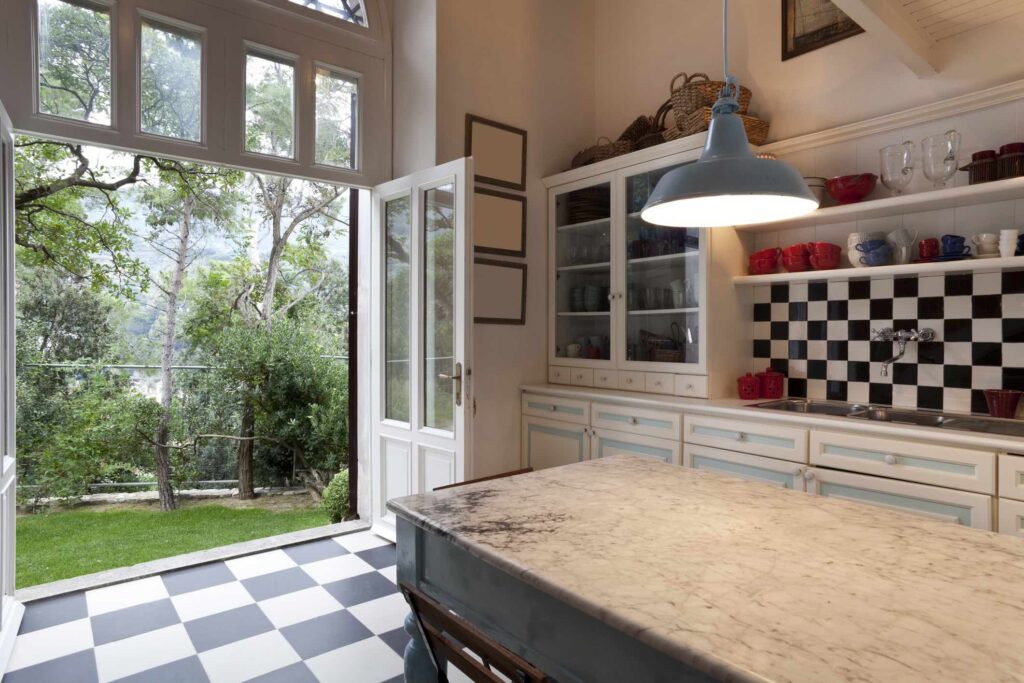Stone Care For Homes and Businesses in NY, NJ & CT
Marble countertops and vanities add a high-end, natural look to kitchens and bathrooms—but over time, wear and tear can dull the surface, leave scratches, or cause etching. At Stoneshine, we restore marble tops throughout New York, New Jersey, and Connecticut, bringing surfaces back to their original finish with proven techniques and professional care.

If your marble has lost its factory polish or developed surface damage, here’s what you should know before attempting restoration—and why calling a specialist is often the best solution.
Know Your Stone
Marble is a softer, porous stone that reacts easily to acids, moisture, and abrasion. Most commonly, it’s calcite-based—but some varieties, like White Thassos or Emperador, are dolomitic and require a different approach. These materials can scratch, etch, and stain easily, and not all respond the same way to polishing techniques.
Preparation: What to Expect Before Restoration
Marble top restoration isn’t just about surface work—it involves careful prep to protect surrounding areas and work around fixtures. Key considerations:
-
Fixtures such as faucets, stoppers, or drop-in sinks may need to be removed for complete access.
-
Etching or damage near the edges or close to hardware may not be fully restorable.
-
Masking and taping off adjacent surfaces is critical to protect cabinets, flooring, and walls from slurry splatter and abrasion.
We always discuss these prep needs with our clients before any work begins.
Step-by-Step Restoration: Honing & Polishing
Most marble tops can be restored using a two-step process:
Step 1: Honing
Honing smooths out surface imperfections, removing scratches, etches, and stains. It’s performed with wet-diamond honing pads using progressively finer grits.
-
Light wear: Start with 400-grit resin-bond
-
Moderate to deep damage: May require starting at 50 or 60 grit
-
Dolomitic marbles (White Thassos, Emperador): Often require 800 to 1500 grit before polishing
Temperature matters—some marbles need a warm slurry to avoid surface burning or uneven texture.
Step 2: Polishing
Polishing restores the surface shine and clarity after honing. Two common methods are:
Wet Polishing
-
Apply polishing powder to a small (2–4 sq. in.) section
-
Mist with water and polish at low speed using a white nylon pad
-
Overlap areas to ensure even coverage and remove slurry with a sponge or squeegee
Dry Polishing
Ideal for dolomitic marbles or when a sharper shine is needed:
-
Use dry-specific polish powder
-
Add minimal water based on the stone type
-
Work at 2500 RPM, gradually increasing speed as the slurry dries
-
Continue until the finish is uniform and glossy
Note: Stones like White Thassos or Emperador often don’t respond well to wet polishing. Dry polishing is recommended to avoid hazing or “orange peel” texture.
When to Call Stoneshine
For light touch-ups, these methods may be helpful—but when marble shows deeper damage, uneven wear, or involves high-end stone types, professional restoration delivers better and longer-lasting results.
Stoneshine serves residential and commercial clients across NY, NJ & CT, with a reputation built on:
-
Decades of experience
-
Specialized techniques for all marble types
-
Hundreds of 5-star reviews
-
Knowledge of regional stone varieties and climate impacts
Let’s Restore Your Marble Surfaces
Whether you need to bring back the original finish or fix years of damage, our trained technicians can help. We also offer protective treatments to help prevent future staining or etching.
📞 Call Stoneshine today to request an on-site consultation and learn more about your marble restoration options.
